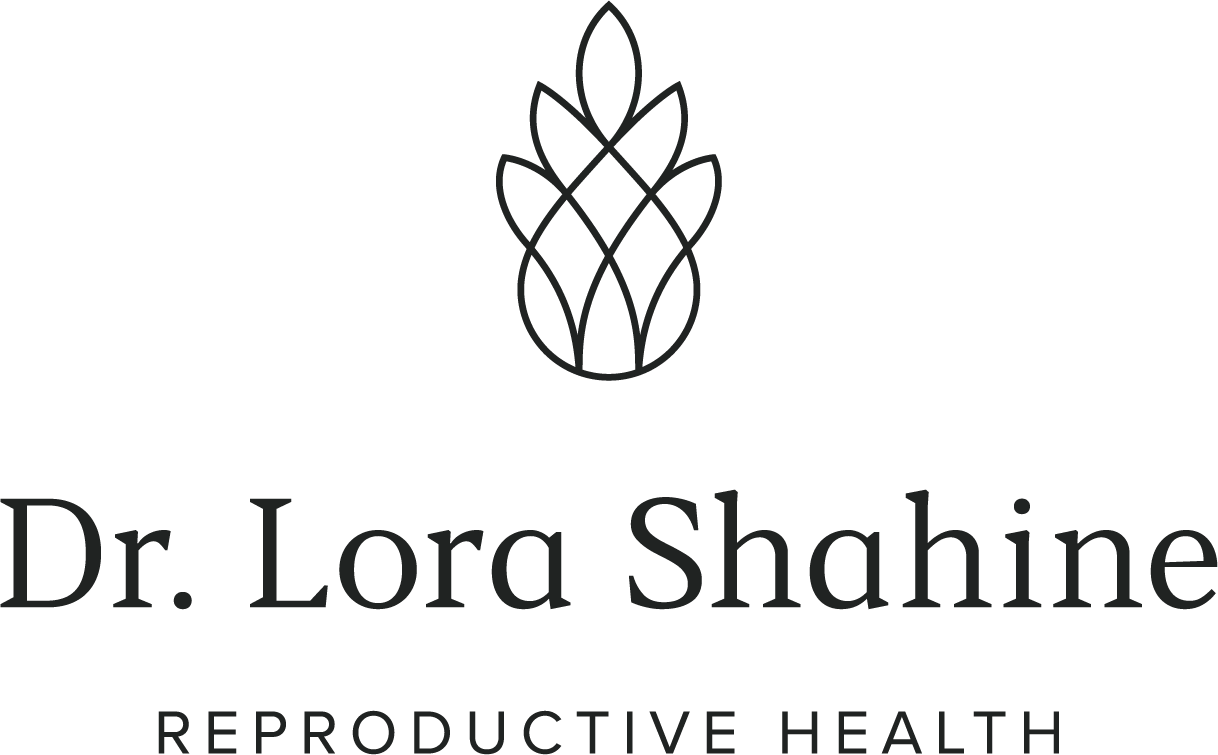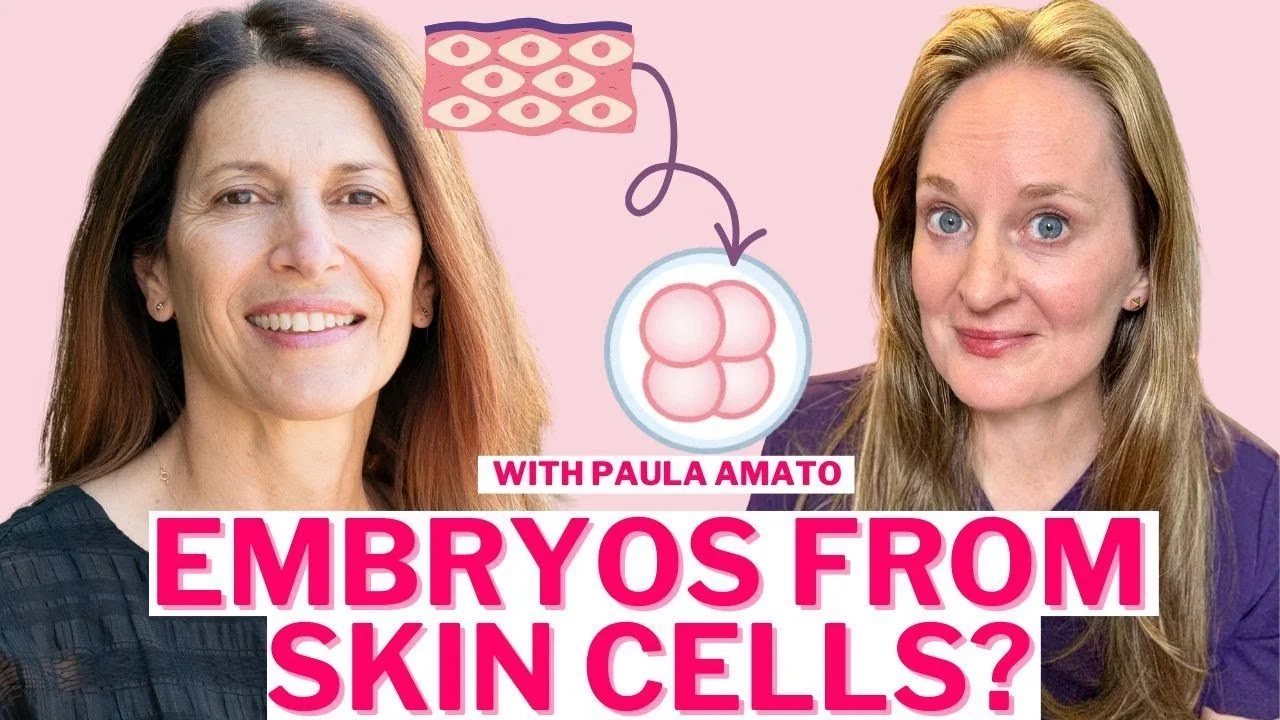Embryos from Skin Cells: The Future of Fertility is Here
The headlines were bold and attention-grabbing: "Human Embryos Made from Skin Cells." This groundbreaking scientific discovery has the potential to revolutionize the field of reproductive medicine, offering new hope to those struggling with infertility. But what does this research really mean, and how close are we to seeing this technology become a reality?
In this in-depth exploration, we'll dive into the science behind this breakthrough, understand the ethical considerations, and explore the far-reaching implications for the future of fertility. Join us as we unpack this incredible development with the help of Dr. Paula Amato, the reproductive endocrinologist and researcher at the forefront of this cutting-edge work.
The Science Behind Embryos from Skin Cells
At the heart of this discovery is a process known as in vitro gametogenesis (IVG), which involves the creation of human embryos from skin cells. This innovative approach holds the promise of helping individuals who have lost their fertility, either due to age or medical treatments, to have genetically related children.
As Dr. Amato explains, the key to this breakthrough lies in the unique properties of egg and skin cells. While our regular body cells, like those found in our skin, carry the full complement of 46 chromosomes, egg and sperm cells are different. These reproductive cells have only 23 chromosomes each, allowing them to combine and create a new individual with the complete 46-chromosome set.
Skin cells, like all other body cells, have 46 chromosomes, carrying our full genetic code.
Egg and sperm cells, on the other hand, have only 23 chromosomes each, allowing them to fuse and create a new individual with the complete 46-chromosome set.
The challenge lies in finding a way to take the genetic material from a skin cell and transform it into a cell that can mimic the behavior of an egg or sperm cell, with the ability to divide and recombine chromosomes.
This is where the researchers at the OHSU Center for Embryonic Cell and Gene Therapy have made their breakthrough. By using a process called somatic cell nuclear transfer, they were able to take the nucleus (the part of the cell that contains the DNA) from a skin cell and transfer it into a donor egg cell that had its own nucleus removed.
The goal was to then induce this reconstituted egg cell to divide and shed half of its chromosomes, just as a normal egg cell would do during fertilization. If successful, this would create an embryo with a unique combination of chromosomes from both the skin cell donor and the sperm cell, allowing for the possibility of a genetically related child.
The Challenges and Limitations
While the headlines may have suggested that this technology is ready for immediate clinical application, the reality is that there is still a significant amount of work to be done before it can be safely and effectively used to help patients.
As Dr. Amato explains, the research team was able to create human embryos using this approach, but the process was highly inefficient, with only 9% of the embryos reaching the blastocyst stage (the point at which they could potentially be implanted). Even more concerning, all of the embryos that did develop to this stage were found to be chromosomally abnormal, meaning they had the wrong number or combination of chromosomes.
This highlights the significant technical hurdles that still need to be overcome. The researchers must find a way to reliably and consistently produce embryos with the correct chromosomal makeup before this technology can be considered ready for clinical use.
Additionally, there are important ethical considerations that must be carefully navigated. As Dr. Amato notes, the use of this technology raises questions about access, equity, and the potential for misuse or unintended consequences. These are complex issues that the research team, along with the broader medical and scientific community, must grapple with as the technology continues to evolve.
The Potential Benefits and Implications
Despite the challenges, the potential benefits of this research are truly remarkable. If the technical and ethical obstacles can be overcome, this technology could open up new avenues for individuals and couples who have struggled with infertility.
One of the most promising applications is for women who have lost their fertility due to age or medical treatments, such as chemotherapy. By using a skin cell from the individual, the researchers could potentially create an egg cell that could then be fertilized with sperm, allowing the person to have a genetically related child.
Another exciting possibility is the potential to help same-sex couples have children that are genetically related to both partners. Currently, same-sex couples often rely on donor eggs or sperm, or use a gestational carrier, to build their families. With this technology, it may be possible for a same-sex couple to create an embryo using genetic material from both partners, opening up new avenues for family building.
Of course, these potential benefits must be weighed against the ethical considerations, as Dr. Amato highlighted. Issues of access, equity, and the potential for misuse will need to be carefully addressed as this technology continues to evolve.
The Road Ahead
While the headlines may have suggested that this technology is ready for immediate clinical application, the reality is that there is still a significant amount of work to be done before it can be safely and effectively used to help patients. As Dr. Amato explains, the research team is committed to continuing their work, exploring ways to improve the efficiency and reliability of the process, while also addressing the ethical concerns that have been raised.
In the meantime, the existing options for fertility treatment, such as in vitro fertilization (IVF) and egg donation, remain important and viable paths for those struggling with infertility. These established techniques have helped countless individuals and couples build their families, and they will continue to play a crucial role in the field of reproductive medicine.
As we look to the future, it's clear that the development of embryos from skin cells represents a significant milestone in the ongoing quest to push the boundaries of what's possible in the world of fertility and family building. While the road ahead may be long and challenging, the potential benefits of this research are truly remarkable, offering hope to those who have long dreamed of having a genetically related child.
Conclusion
The creation of human embryos from skin cells is a remarkable scientific achievement, one that holds the potential to transform the lives of those struggling with infertility. While the road ahead is not without its challenges, the dedication and innovation of researchers like Dr. Paula Amato and her team at the OHSU Center for Embryonic Cell and Gene Therapy are paving the way for a future where the dream of a genetically related child may be within reach for more individuals and couples.
As we continue to navigate the complex ethical and practical considerations surrounding this technology, it's important to remain hopeful and engaged. By staying informed, supporting responsible research, and advocating for equitable access to fertility treatments, we can work together to ensure that the promise of this breakthrough is realized in a way that benefits all those who dream of building a family.
Resources and Connections
Dr. Lora Shahine's Newsletter - Stay up-to-date on the latest in reproductive health and wellness
Dr. Lora Shahine's Podcast "Brave & Curious" - Explore more topics related to fertility, pregnancy, and reproductive health
For more insights and resources from Dr. Lora Shahine follow her on Instagram, TikTok, Twitter, and Facebook.


